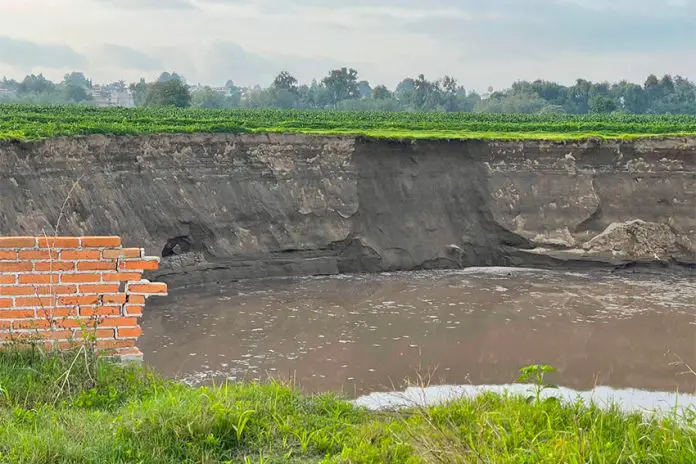The massive Puebla sinkhole, which measures over 126 meters across, is the result of natural phenomena rather than the overexploitation of groundwater, the National Water Commission (Conagua) said.
The commission decided that the most likely cause was the dissolution of calcareous rocks, such as limestone or dolostone, rather than overexploitation as had been suggested by ecological activists.
The giant pit emerged in Santa María Zacatepec, a community about 20 kilometers northwest of Puebla city, in late May. It was initially about 10 meters wide and has steadily grown to swallow a nearby property and become a tourist attraction in the process.
Conagua said that caves may have formed below ground in a natural process. “There are elements that suggest the formation of caves or sinkholes, which occurs due to a natural process of dissolution of calcareous rocks and can eventually collapse.”
The commission also discarded the theory of overexploitation, stating that water pressure levels in the Puebla Valley spring remained stable. “The Puebla Valley aquifer still has availability, so it has been concluded that the aquifer is not in a condition of overexploitation, and that overexploitation obviously could not be the cause of the geological accident, the sinkhole.”

It also revealed that underground water in the area had a higher temperature than in others, which suggested that water had risen. Further study should focus “on the deeper geological and tectonic analysis of the area of interest,” it concluded.
Meanwhile, the sinkhole has become a cultural phenomena in its own right. The two dogs, Spay and Spike, that were rescued from the pit, inspired a local bakery to produce a commemorative cake.
The chasm has also attracted tourism: onlookers can pay 5 pesos to access the roof of a house close to the security barrier to exploit the photo opportunity.
It was the theme of a cumbia song and now a horticulturist has created a plant pot depicting the sinkhole, including a miniature house and two miniature dogs.
